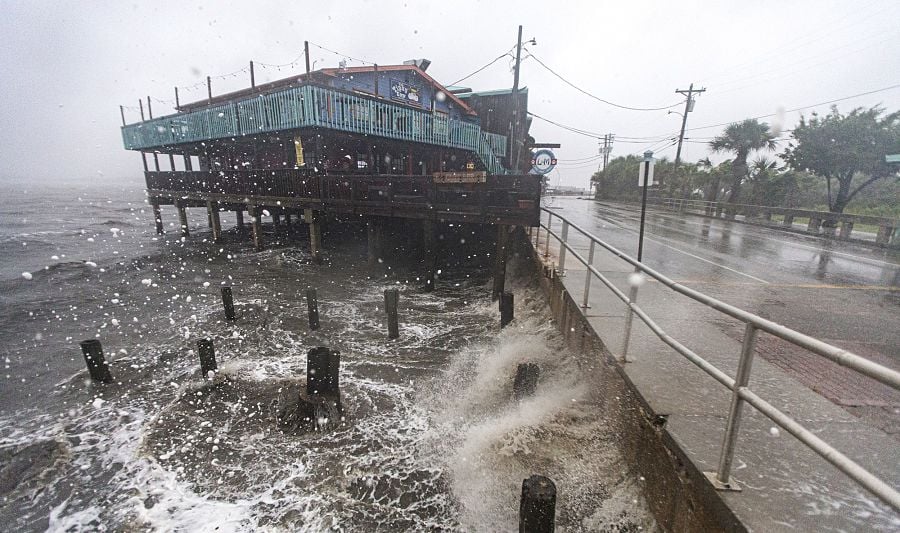

The sea level along the U.S. coast will rise by an average of a foot during the next 30 years, according to report this week from the National Oceanic and Atmospheric Administration, or NOAA, that shows a devastating range of effects due to global warming.
This will have enormous implications for physical risk assessments and sustainable investing, fund managers say. Real estate, insurance and supply chains will be affected heavily.
By 2050, the sea level will increase by as much as it had between 1920 and 2020, the NOAA reported. The new levels will be 10 to 14 inches higher along the East Coast, 14 to 18 inches for the Gulf Coast and four to eight inches for the West Coast. Alaska, Hawaii and the Caribbean will also be heavily affected, NOAA found.
That means coastal flooding will extend farther inland than it does currently, with damaging levels of flooding projected to occur 10 times more frequently.
“This report highlights that as these sea levels are reassessed, the flooding maps are totally obsolete,” said Nathalie Wallace, head of sustainable investing at Natixis Investment Managers. “We keep catching up on a reality that is way ahead of current flood maps… This is something that needs to be incorporated every time you look at real estate exposure in your portfolio.”
More human suffering will also be a consequence of flooding, Wallace added.
From a financial perspective, beyond company and real estate values, bond portfolios will be affected, she noted.
There are also big considerations around insurance. Current policies, based on already outdated flood maps, could lead to a volume of claims that would strain insurance companies. Premiums will likely rise to unaffordable levels for many businesses in the future, according to a recent paper from the Investor Leadership Network that Natixis contributed to.
A hint of things to come can be seen by the U.S. Flood Insurance Program, which has incurred nearly $50 billion in claims related to five extreme weather events since 2005, Wallace noted. According to the Congressional Research Servicehttps://sgp.fas.org/crs/homesec/R44593.pdf, the program is in debt by more than $20 billion, and that is after Congress canceled $16 billion in debt in 2017.
Currently, there is about $1 trillion in real estate in flood zones in the East Coast, she said.
“We are also looking to invest in additional fortification and resilience measures,” Wallace said, noting that Hurricane Sandy in 2012 showed how far inland flooding damage can occur.
“We cannot move New York City. So when we talk about adaptation … it’s really crucial for mayors to think about the impact of sea level rises and weather events,” she said.
Devastating flooding seen last year in Germany and Belgium also showed that “this is not going to go away. It’s going to increase dramatically over the next couple of years.”
Robert Klaber, director of ESG research and a portfolio manager at San Francisco-based Parnassus Investments, said the effects of sea level rise on real estate and supply chains leave much for the financial services industry and investors to consider.
“Being out here on the West Coast in the Bay Area, we also talk about the effect it could have on wildfires,” Klaber said, citing wider effects of climate change on extreme weather. “Those types of events – hurricanes, tornadoes – we’re seeing more of these events more frequently.”
The company assesses which sectors and geographies will be most affected.
“We’re talking about, ‘What are the companies, what are the sectors that have physical risks related to climate change?’” he said. “We’re looking to minimize our exposure to companies — and supply chains for those companies — that could be most at risk.”
As part of that, Parnassus has been pushing companies in its portfolios to increase transparency around their supply chains, emissions and targets, he said.
Large, multinational firms are much more likely to measure emissions and have targets for reduction in place, he noted.
“With the number of climate-related events occurring more frequently and the risk getting bigger, for retail investors, it means this is something they should be more focused on now than ever before,” he said. “The impact is real. There is material risk to companies that are susceptible to rising sea levels, more hurricanes, more tornadoes and more wildfires.”

Relationships are key to our business but advisors are often slow to engage in specific activities designed to foster them.

Whichever path you go down, act now while you're still in control.

Pro-bitcoin professionals, however, say the cryptocurrency has ushered in change.

“LPL has evolved significantly over the last decade and still wants to scale up,” says one industry executive.

Survey findings from the Nationwide Retirement Institute offers pearls of planning wisdom from 60- to 65-year-olds, as well as insights into concerns.
Streamline your outreach with Aidentified's AI-driven solutions
This season’s market volatility: Positioning for rate relief, income growth and the AI rebound
